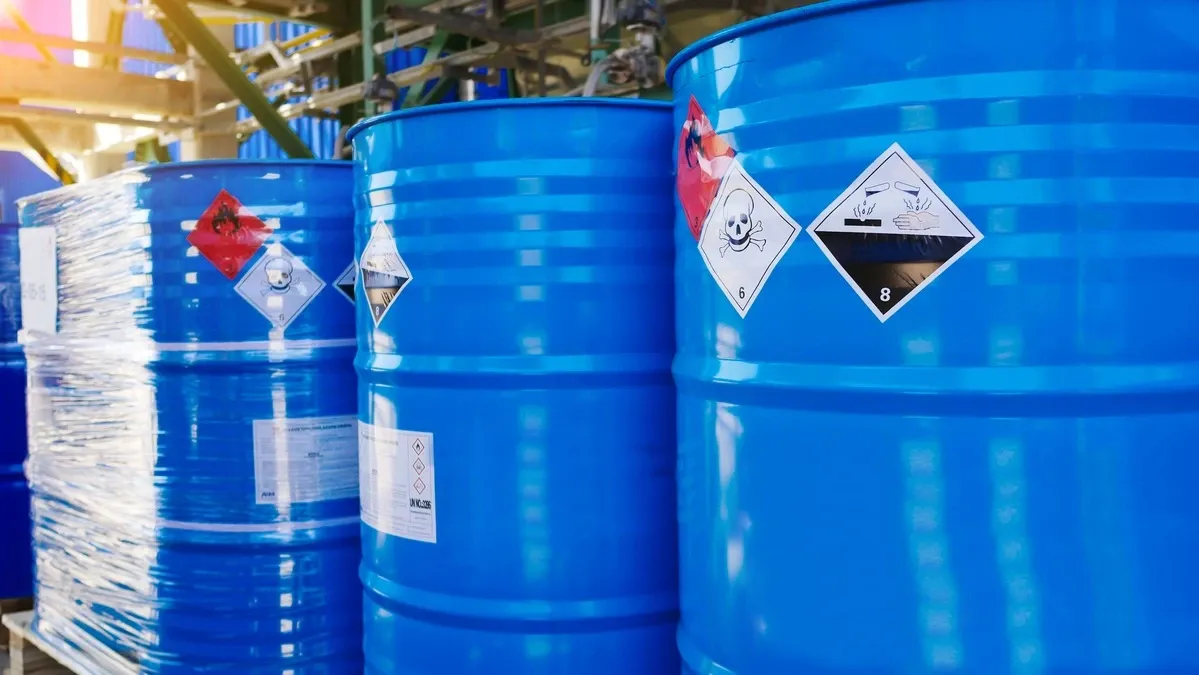The International Maritime Organization has published MSC.1/Circ.1668, the Unified interpretation of bunkering manifold arrangements fitted on LNG bunkering ships in the IGC Code.
Introduction
The Maritime Safety Committee, at its 107th session (31 May to 9 June 2023), with a view to providing more specific guidance for the application of the relevant requirements of the International Code for the Construction and Equipment of Ships Carrying Liquefied Gases in Bulk (IGC Code), as amended by resolution MSC.370(93), approved a unified interpretation of the IGC Code, prepared by the Sub-Committee on Carriage of Cargoes and Containers, at its eighth session, as set out in the annex.
Member States are invited to use the annexed unified interpretation as guidance when applying the relevant provisions of the IGC Code and to bring them to the attention of all parties concerned.
Annex: Unified interpretation of bunkering manifold arrangements fitted on LNG bunkering ships in the IGC Code
Paragraph 11.3.1 of the IGC Code states:
"11.3 Water-spray system
11.3.1 On ships carrying flammable and/or toxic products, a water-spray system, for cooling, fire prevention and crew protection shall be installed to cover:
- .1 exposed cargo tank domes, any exposed parts of cargo tanks and any part of cargo tank covers that may be exposed to heat from fires in adjacent equipment containing cargo such as exposed booster pumps/heaters/re-gasification or re-liquefaction plants, hereafter addressed as gas process units, positioned on weather decks;
- .2 exposed on-deck storage vessels for flammable or toxic products;
- .3 gas process units positioned on deck;
- .4 cargo liquid and vapour discharge and loading connections, including the presentation flange and the area where their control valves are situated, which shall be at least equal to the area of the drip trays provided;
- .5 all exposed emergency shut-down (ESD) valves in the cargo liquid and vapour pipes, including the master valve for supply to gas consumers;
- .6 exposed boundaries facing the cargo area, such as bulkheads of superstructures and deckhouses normally manned, cargo machinery spaces, storerooms containing high fire-risk items and cargo control rooms. Exposed horizontal boundaries of these areas do not require protection unless detachable cargo piping connections are arranged above or below. Boundaries of unmanned forecastle structures not containing high fire-risk items or equipment do not require water-spray protection;
- .7 exposed lifeboats, liferafts and muster stations facing the cargo area, regardless of distance to cargo area; and
- .8 any semi-enclosed cargo machinery spaces and semi-enclosed cargo motor room.
Ships intended for operation as listed in 1.1.10 shall be subject to special consideration (see 11.3.3.2)."
Paragraph 11.4.1 of the IGC Code states:
"11.4 Dry chemical powder fire-extinguishing systems
11.4.1 Ships in which the carriage of flammable products is intended shall be fitted with fixed dry chemical powder fire-extinguishing systems, approved by the Administration based on the guidelines developed by the Organization,* for the purpose of fire fighting on the deck in the cargo area, including any cargo liquid and vapour discharge and loading connections on deck and bow or stern cargo handling areas, as applicable.
*Refer to the Guidelines for the approval of fixed dry chemical powder fire-extinguishing systems for the protection of ships carrying liquefied gases in bulk (MSC.1/Circ.1315).
11.4.3 The dry chemical powder fire-extinguishing system shall be designed with not less than two independent units. Any part required to be protected by 11.4.2 shall be capable of being reached from not less than two independent units with associated controls, pressurizing medium fixed piping, monitors or hand hose lines. For ships with a cargo capacity of less than 1,000 m3, only one such unit need be fitted. A monitor shall be arranged to protect any load/unload connection area and be capable of actuation and discharge both locally and remotely. The monitor is not required to be remotely aimed, if it can deliver the necessary powder to all required areas of coverage from a single position. One hose line shall be provided at both port- and starboard side at the end of the cargo area facing the accommodation and readily available from the accommodation."
Paragraph 18.10.3.2 of the IGC Code states:
"18.10.3.2 The ESD system shall be automatically activated on detection of a fire on the weather decks of the cargo area and/or cargo machinery spaces. As a minimum, the method of detection used on the weather decks shall cover the liquid and vapour domes of the cargo tanks, the cargo manifolds and areas where liquid piping is dismantled regularly. Detection may be by means of fusible elements designed to melt at temperatures between 98°C and 104°C, or by area fire detection methods."
Interpretation
1. Due to the specifics of liquefied gas bunkering ships, some of these vessels may be provided with additional cargo transfer equipment including transfer loading arms, bunkering booms, transfer hoses, reducers, spool pieces and transfer hose reels. This additional equipment can be installed in different locations around the ship.
2. When in use, this additional cargo transfer equipment should comply, where appropriate, with the requirements of paragraphs 11.3.1.4, 11.3.1.5, 11.4.1, 11.4.3 and 18.10.3.2 of the IGC Code for fire detection and fire protection in the cargo area (such as fusible elements, ESD functionality, water spray system protection, dry chemical powder fire-extinguishing systems and drip trays), including hull protection from low temperatures."
MSC.1/Circ.1668 has been published on 27 June 2023.
For more information, please see the documents below (available only to subscribers):
Unified interpretation of bunkering manifold arrangements fitted on LNG bunkering ships in the IGC Code
Amendments to the International Code for the Construction and Equipment of Ships Carrying Liquefied Gases in Bulk (IGC Code)

Sign up for our newsletter
Your most up-to-date maritime regulations news
It's free. No spam. Cancel anytime.










Related News
IMO revises guidelines for high manganese steel in cryogenics
Jul 26, 2024
IMO's 2020 report on marine waste dumping permits under the London Convention and Protocol
Jul 25, 2024
IMO: Revised emergency response procedures for dangerous goods - updated EmS Guide
Jul 24, 2024